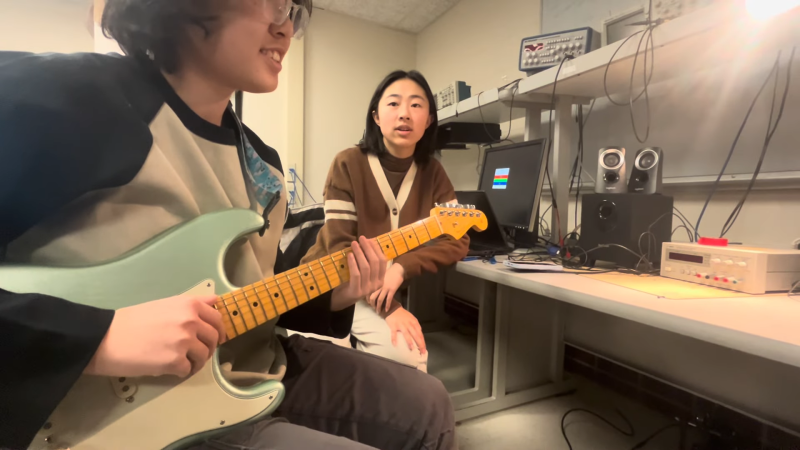Loop stations are neat things, able to replay one or more loops of audio over and over again while you perform over the top of them. Musicians like [Marc Rebillet], [Reinhardt Buhr], and [Dub FX] have made careers out of this style of performance. [Yaqi Gao], [Xiaoyu Liang] and [Alina Wang] decided to build a loop station of their own, using the popular RP2040 chip.
At its simplest, a loop station must take in audio, record it, and then play it back. Generally, it can do this with several tracks and mix them together, while also mixing in the incoming audio as well. The group achieved this by inputting a guitar signal to the chip via an amplifier and the onboard analog-to-digital converter. The audio can be recorded as desired, and then played back via an external digital-to-analog converter. Live audio from the guitar is also passed through to allow performing over the recorded sound. The group also used an external half-megabyte FRAM chip to allow storing additional audio sample data, which can be trucked out over serial and saved.
It’s not the cleanest loop station in the world, with a relatively low sample rate causing some artifacts. Regardless, it definitely works, and taught the group plenty about working with digital audio in the process. For that reason alone, we’d call it a success.

















“Regardless, it definitely works, and taught the group plenty about working with digital audio in the process. For that reason alone, we’d call it a success.”
That’s reason enough to do it.
There’s a lot of projects that don’t do anything new or ground breaking, or even do something old as well as an existing device. That’s fine as long as the folks doing them learn something along the way.
Absolutely Thumbs Up!
Thumbs up!
Great! Lessons learned.
Then it’s on to using Mobius (Win) a free download that has 8 loops and dozens of commands.
Now get that running on a SBC and my interest perks.
Not a SBC, just MCU… Raspberri Pi ≠ Pi Pico (RP2040 MCU)
This project rocks. There, I said it.
Using RP2040 12… eeh 9 bits ADC for audio?
Should have used a real I2S ADC/DAC handled by RP2040 PIOs!
check out “bit crushers”, I think it’s part of the charme here
But do they have a soundcloud or bandcamp account?